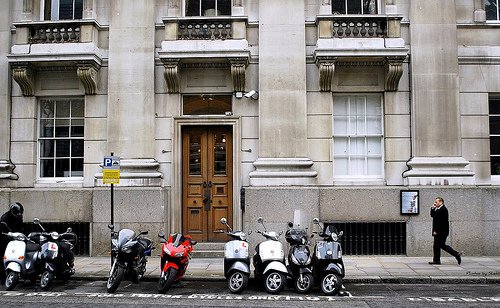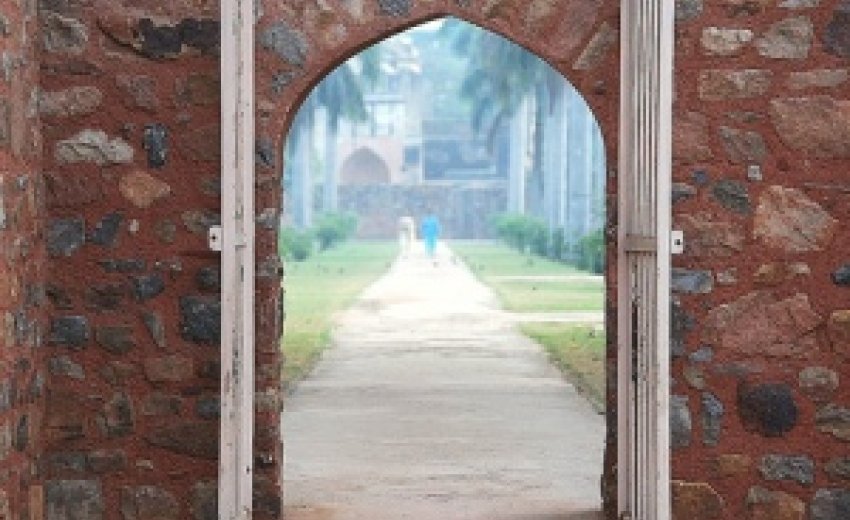I’m reposting this from my other blog as I realized that a lot of it are life lessons that can apply to a lot of different situations. These were learnt while working for an American startup with technology and operations in India. Due to the distance and difference in cultures it is important to build trust yet verify, communicate while being transparent and innovative by giving people freedom of thought.
This post was inspired by a TED talk by Devdutt Pattanaik, (video below) in which he talks about how the objective, rational and scientific western thought process has influenced their innovation and business culture. At the same time he discusses how the cultural and artistic aspects together with the subjective philosophy and mythology of eastern cultures, particularly India has affected the way its people live, work and do business. Check out the highly enjoyable talk below. Based on his vision I draw parallels to lessons learnt in my own professional life.
 |
| The grass is greener on the other side |
Trust but verify
One of the toughest things to do across oceans is communicating changing priorities in a fast paced environment. In the early days of the startup, while we were still stabilizing the vision and the base feature sets for the product we needed to have almost daily phone calls. There were times when the Executives and Sales teams camped out in India for weeks and sometimes months at time. We figured its easier and more effective to have the executives and customer managers here interacting with the engineers on a daily basis. As Senior Engineer in the early days and now as a Product Manager, I spend a lot of time interacting with end-users, stakeholders including participating in high level executive meetings to really get to know the customer. We were able to inculcate a culture of open communication and innovation in our India center and the larger organization.
The biggest payoffs for this strategy of building trust came during critical deadlines, and when the crunch times came, both sides trusted each other. From the American perspective this meant that even though a critical customer demo was just days, sometime hours, away the crucial feature or configuration being readied by the Engineering team will be delivered on time and in working condition. At the same time, the India team knew through timely quality checks and demo reviews on what exactly was needed trusting that their hard work was being valued. Sitting across oceans has obvious disadvantages in terms of personal interaction, but at times it can be of great strength, which brings me to the next point.
Time zones are your friends
Another challenge in the globalized world is that companies and sometimes employees are connected 24/7. I’m on my iPhone checking email 16 hours a day and having late night or early morning meetings with the US. It had gotten to a point where I had to set a rule and not check my phone/email for at least 30 mins after I wake up in the morning :) . However, at the same time we have striven to make the best of a 24 hr work cycle. We try to schedule most conference calls in the evenings India time and corresponding morning US time to minimize discomfort and disruptions while increasing in-depth communication between teams. The US employees are accommodated with very flexible policies around working from home.
Our application, being a Software as a Service (SaaS) web-based product has a lot of configuration options to customize the app according to each customer’s needs. On top of that, we are a full service and support vendor, that is, we manage all the IT installation, support and configuration needs for our customers. One advantages of a 24 hours workforce as a startup is quick turnaround on high priority requests. When configuration requests or bugs come up that take more than a few hours to complete, we can usually fulfill them within 24 hours. Our Engineering team gets the support requests in the morning, by the afternoon all the development level changes are made and the quality assurance and production change is done before the US end users start their day.
 |
| We all need to go places. Photo by Shekhar |
Creativity is a two-way street
Sometimes it is assumed in the technology industry that since the product is being made for the American market, the US-based employees will have the most innovate ideas and suggestions when it comes to evolving the product. While there is some truth to that, we have had numerous occasions where the India Engineering team has exceeded expectations on analytical problem solving and new feature ideas and implementations.
To enable such a contribution it was and is important to fully communicate the business case and problems around any new feature and requirement. Then while following an iterative and agile development approach, we are able to come up with radically new approaches towards implementation. Engineers will innovate if they are given the freedom and time to think creatively while arming them with the correct data around the customer’s business requirements and problems. The more interaction between the builder and the consumer, the better.
Transparency is underrated
Distributed workforce and customers require free, open and transparent communication to reduce disconnects and it is most important when communicating requirements and deadlines. Bending backwards to please a customer or end-user who is jumping up and down with their requests is a good short-term policy. However, if repeated too often, it could lead to dangerous precedents and will end up discomforting a lot of people on both side of the aisle over time.
It is important to keep all parties informed on the current status and priorities while efficiently communicating any scenarios that could lead to changes in the plan. The customers in the US like this because they are not being kept in the dark and the engineers in India like it as it gives them a little more flexibility on meeting most of the requirements as needed. Building innovative software can sometimes be an art requiring a more nuanced approach and that subjectivity can be a great strength if used properly. This brings me to the next and last point.
 |
| Slaves of the System, Photo by Shekhar |
Deliver bad news fast
Holding back information can sometimes really come back to bite you. Nowhere have a seen a greater cultural difference in human communication between westerners and easterners, than when it comes to delivering bad news. Indians, mostly because of our insecurities or maybe even an inferiority complex built from centuries of intensely hierarchical social structures are very hesitant on speaking their mind when they disagree with someone in authority or have to communicate a loss to their superiors. Decades of mind numbing bureaucracy has built a sense of complacency in our psyche. Indians even have a term for this attitude, Chalta hai, roughly translated “So it goes”. While this is essential for us to keep our sanity in the chaotic democracy that we live, in the professional environment, this mindset kills careers.
For this to not happen, both sides need to fully understand their cultural perspectives. Westerns get exasperated when they hear or find out about such things, without putting it in context. Indians need to understand that no news is not always good news and sometimes even bad news is good news if communicated in the right manner and time.
Conclusion
In the end I would like to invite you to read my other post on Communicate, accommodate and resonate. Oh and do checkout the video below, I assure its pretty entertaining.
Devdutt Pattanaik: East vs. West — the myths that mystify

